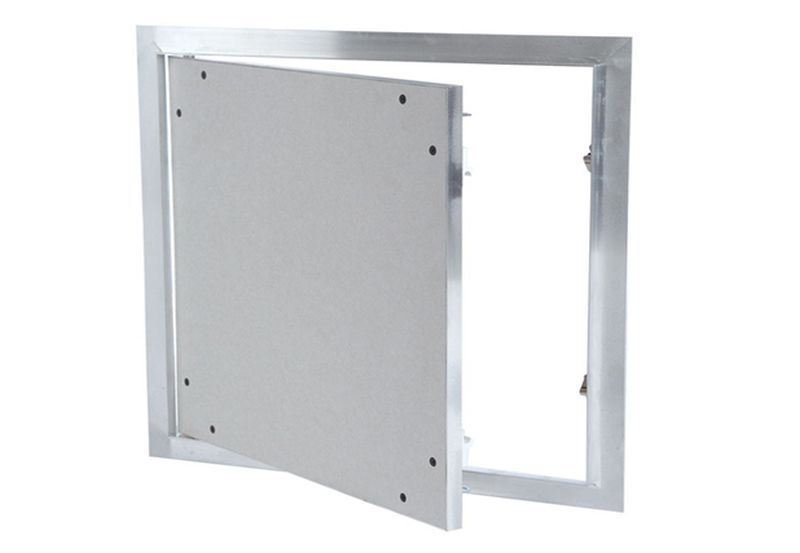Insulated access doors are crucial in residential, commercial, and industrial construction projects. They deliver easy access to confined spaces for maintenance and inspection while improving a building’s energy efficiency and noise control.
Choosing the right insulated access door requires thoughtful planning and consideration of a few factors to ensure optimal performance and adherence to building codes.
Here are some of them:
Door Size and Fit
The first step is ensuring the new access door fits the existing opening. Measure the opening’s height, width, and diagonal measurements at multiple points to account for any potential inconsistencies. Standard access door sizes typically range from 12″ x 12″ to 36″ x 84″, give or take. Custom sizes, however, are available to accommodate specific needs.
While a slightly smaller door might seem okay, it can lead to installation difficulties and gaps around the frame. These gaps can compromise the door’s insulating properties and let air and moisture in. They can potentially affect energy efficiency and promote mold growth. A properly sized door with minimal clearance ensures a tight seal and simplifies installation.
Door size also impacts ease of access for future maintenance. Consider the equipment or materials that need to pass through the access door during the building’s lifespan. Choosing a slightly larger door upfront anticipates future use and modifications.
Material Selection
Your choice of material for an insulated access door should be based on its application and features.
For instance, galvanized steel is popular for interior applications because it’s affordable, durable, and resistant to dents and scratches. On the other hand, aluminum is a lighter option for larger access doors and provides excellent corrosion resistance. These qualities make aluminum doors ideal for exterior applications or higher humidity areas. Lastly, stainless steel offers superior corrosion resistance but at a higher price tag.
Insulation Properties
The effectiveness of an insulated access door in maintaining thermal efficiency is measured by its R-value. The higher the R-value, the greater its resistance to heat flow. A higher R-value means better insulation and reduced energy consumption for heating and cooling.
Polyurethane foam is a common insulation material used in access doors, offering a good balance of thermal performance and affordability.
Weatherstripping and Sealing
Weatherstripping is a crucial component that ensures a tight seal around the access door frame. It prevents air and moisture from coming in, improving energy efficiency and noise control.
Several types of weatherstripping materials are available, each with its own advantages:
- Silicone Weatherstripping: This provides excellent flexibility and compression for a long-lasting seal.
- Compression Gaskets: These use compression force to create a tight seal against the door and frame. They are available in various materials, such as foam or rubber.
The effectiveness of weatherstripping depends on both the material and the installation. Look for weatherstripping material that complements your chosen door material. Ensure it is installed according to the manufacturer’s instructions for optimal performance.
Fire-Rated Doors
Let’s talk about fire-rated doors for a second. Building codes require fire-rated doors in specific areas to help slow down the spread of fire. These doors are made of materials that can withstand high temperatures for a particular time frame.
We recommend checking your local building codes to determine the required fire rating for the access door.
Installation Considerations
Insulated access doors can be installed by experienced DIYers or by professional contractors.
For DIY installation, consider your experience and the complexity of the door and frame. Installing a standard access door in an opening might seem easy for a handy builder. However, more complex projects involving custom sizing, uneven openings, or fire-rated doors are best left to professionals.
Professional installers have the expertise and the tools to ensure proper fit, alignment, and long-term performance of the access door. This allows you to maximize its benefits and minimize the risk of future issues.
Wrapping It Up
Choosing the right insulated access door requires careful consideration of several factors, including size, material, insulation properties, weatherstripping, and installation.
Following these guidelines and consulting with manufacturers or distributors, you can pick the doors that optimize energy efficiency, noise control, and ease of access for your projects.
